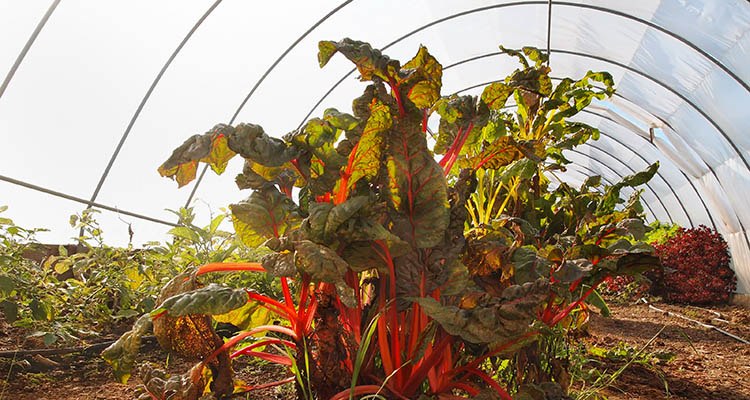Learning how to build a hoop house for your residential garden can help extend your growing season and protect your crops from pests, frost and wind pressure. Hoop houses are greenhouses made by covering a hoop structure with clear plastic material. There are many benefits to gardening inside of a hoop house and with a modest investment in materials and time you can be taking advantage of the perks this gardening season.
How to Build a Hoop House
Even though hoop houses are simpler structures than traditional greenhouses, the execution takes planning and care. Follow these instructions on how to build a hoop house to take advantage of the many benefits they offer. Choose the best location and orientation on your property. Hoop houses require flat, level sites with good drainage. Hoop houses should be oriented so the ends align with winds for maximum ventilation.- Build a four-sided ground frame from rot-resistant lumber. Set your frame in place and drive temporary wooden stakes into the ground on the outside corners to prevent movement.
- Pound PVC or steel ground pipes into the ground at each corner as well as every three feet along the sides. Each pair of ground pipes will support one hoop pipe.
- The length of the hoop pipe used depends on the width of the hoop house you’re making. When buying the pipe, make sure to have a factory-flared end on one of each pair of pipes so they can come together. The amount of arch also depends on the headroom wanted. With a partner, slip one end of the hoop pipe into the ground pipe and then bend the pipe to fit into the opposing ground pipe. Install all hoops this way.
- Drill quarter-inch diameter holes for lock bolts through the wooden frame, the ground pipe and the hoop pipe. Install carriage bolts in each of the holes.
- Install purlins, which are horizontal pipes that link the hoops together and add strength. Purlins are placed on the inside of the hoop pipes and secured with carriage bolts.
- Install greenhouse plastic cover. Unroll the plastic leaving 12 inches of extra plastic along the ground edges and 24 inches extra at each end and pull it over the structure. Secure the greenhouse plastic to the side of the bottom frame and use spring clamps to attach the plastic to the hoop area from front to back and side to side.



